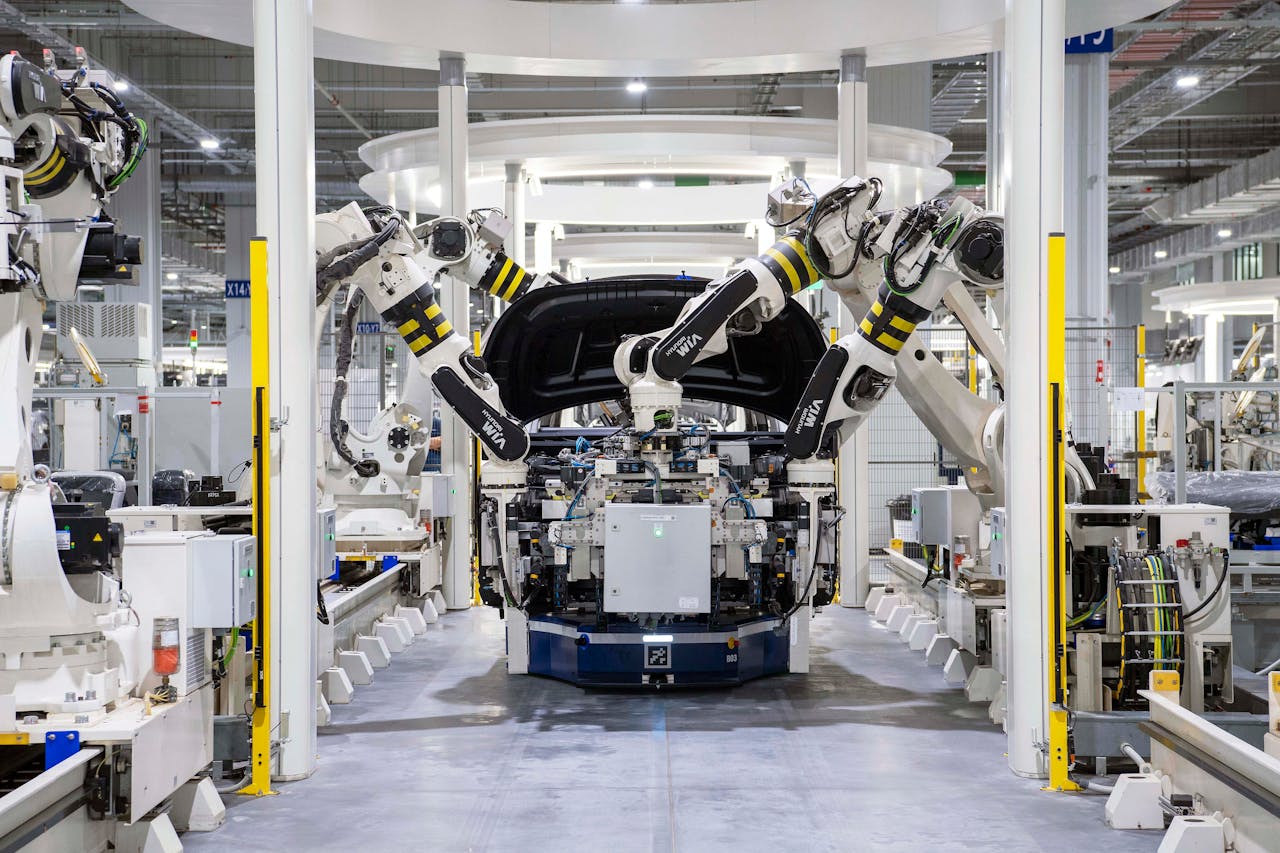Over the next few years, integrating AI into your car dealership can significantly enhance customer experiences and streamline operations. By adopting a people-first approach, you can harness advanced technology while prioritizing the needs of your staff and clients. This guide will provide you with actionable strategies to implement AI effectively, ensuring that digital transformation benefits both your business and your customers.
Key Takeaways:
- Integrate AI tools that enhance customer experiences and personal interactions rather than replace human roles.
- Focus on employee training to effectively utilize AI technology, promoting a culture of adaptability and learning.
- Leverage data analytics from AI systems to inform decision-making and improve operational efficiency in sales processes.

Understanding AI and Its Benefits in Car Dealerships
What is AI?
AI, or Artificial Intelligence, refers to machine systems designed to simulate human intelligence processes. These systems can analyze data, recognize patterns, and make decisions based on the information they process. In car dealerships, AI can enhance customer interactions, streamline operations, and predict inventory needs, creating more efficient processes that benefit both staff and consumers.
Key Benefits of AI in Dealership Operations
Implementing AI in dealership operations offers numerous advantages, including improved customer service, enhanced inventory management, and personalized marketing strategies. By leveraging AI tools such as chatbots and predictive analytics, you can optimize your sales processes, reduce time spent on administrative tasks, and ultimately increase sales and customer satisfaction.
AI not only automates routine tasks but also provides insights that inform decision-making. For example, using AI-driven analytics can help you identify which vehicles are likely to be in higher demand, allowing for smarter purchasing strategies. Additionally, chatbots can handle customer inquiries around the clock, ensuring that potential buyers receive immediate assistance. This level of responsiveness can significantly enhance the customer experience, leading to higher conversion rates and repeat business. Embracing AI thus positions your dealership at the forefront of industry innovation while catering more effectively to customer needs.
How to Assess Your Dealership’s Needs for AI Implementation
Assessing your dealership’s needs for AI implementation requires a clear understanding of your current challenges and your vision for improvement. By evaluating areas like customer service, inventory management, and sales processes, you can identify where AI can add value. For detailed insights, explore how dealers can leverage AI without losing the human touch. This analysis lays the groundwork for a successful integration that aligns with your business goals.
Identifying Pain Points
Start by pinpointing the specific issues that hinder your dealership’s efficiency and customer satisfaction. This might involve analyzing customer feedback, sales data, and employee input to reveal bottlenecks in the buying process or service operations. Creating a list of these challenges will guide you in determining where AI solutions can be most effectively deployed.
Setting Clear Objectives
Establishing clear objectives for AI implementation will focus your efforts and resources. Goals could include improving lead response times, enhancing customer personalization, or streamlining inventory management. With defined targets, you can better evaluate potential AI tools and measure their impact on your operations. Having measurable objectives ensures that you can track progress and make necessary adjustments throughout the implementation phase.
Specific objectives might include reducing customer wait times by 30% through AI-driven chatbots or increasing sales conversion rates by 20% with predictive analytics. Identifying these targets not only clarifies your vision but also helps in securing buy-in from your team. Engaging staff in this goal-setting process promotes ownership and sets a collaborative tone for your AI journey.
Steps to Implement AI Solutions
Implementing AI solutions effectively requires a structured approach. Start by assessing your dealership’s needs and capabilities, followed by setting clear objectives tailored to enhance customer experience and streamline operations. Develop a roadmap incorporating AI technologies, and consider training your staff for a smooth transition. Explore The AI Revolution: 5 Trends Transforming the Future of … to identify the most relevant innovations for your business.
Choosing the Right AI Technologies
Selecting the appropriate AI technologies involves understanding both your specific dealership goals and the available solutions on the market. Analyze tools that enhance customer interactions, such as chatbots, or those that optimize inventory management. Conduct trials to evaluate functionality and impact on your sales processes, ensuring the technology aligns with your long-term vision.
Integrating AI with Existing Systems
To maximize the benefits of AI, ensure seamless integration with your current systems, such as CRM or inventory management. Selecting platforms that easily connect with your existing infrastructure will facilitate data flow, enabling more effective sales strategies and improved customer relations.
Integrating AI with existing systems demands careful planning and clear communication among your tech teams. Utilize APIs to connect AI tools with your dealership’s CRM and other management systems, ensuring data consistency across platforms. Training your staff on the integrated systems will enhance user experience and promote efficient processes, ultimately resulting in improved customer engagement and satisfaction. A thoughtful integration strategy strengthens your dealership’s operations, leading to a more interconnected and responsive environment.
Tips for a People-First Approach
Adopting a people-first approach in your dealership’s AI implementation fosters a supportive and engaging environment. Prioritizing your staff’s needs over technology leads to higher adoption rates and more effective use of AI tools. Consider these tips:
- Communicate openly about the changes.
- Encourage feedback throughout the process.
- Promote a positive culture towards technology adoption.
Assume that your team is your best resource in this transformation.
Involving Staff in the Transformation Process
Involving your staff throughout the transformation process empowers them and encourages buy-in. Facilitate workshops and meetings where employees can voice their concerns, share ideas, and feel heard. This collaboration ensures that the AI solutions are aligned with their day-to-day responsibilities and enhances their comfort with new technologies.
Training and Support for Employees
Providing comprehensive training and ongoing support is vital for successful AI integration. Equip your employees with the necessary skills to navigate new systems confidently. Regular training sessions, both in-person and virtual, help reinforce their knowledge and tackle any challenges they encounter.
Effective training sessions include hands-on demonstrations, real-life scenarios, and practical examples tailored to your dealership’s operations. Encourage mentors within your team who can assist their peers and create a supportive learning environment. Regular check-ins and refreshers ensure that knowledge stays current, mitigating the anxiety around new technologies and boosting morale as employees see improvements in their workflow.

Factors to Consider for Successful AI Adoption
Assessing the factors leading to successful AI adoption enhances your dealership’s digital transformation efforts. Focus on understanding your team’s readiness, evaluating the technology landscape, and budgeting adequately for implementation. Factors to consider include:
- Employee training and support
- Integration with existing systems
- Customer acceptance and feedback
Assume that addressing these areas will lead to a more effective and smoother transition toward AI technologies. For further insights, refer to AI in the Dealership: Cutting Hype, Driving Value.
Customer Experience Enhancement
AI can significantly personalize and enhance customer experiences within your dealership. Implementing chatbots for immediate queries or using predictive analytics to tailor vehicle recommendations will keep customers engaged and satisfied. Utilizing customer data enables a deeper understanding of individual preferences, ultimately ensuring that each interaction is more relevant and meaningful.
Data Privacy and Security Measures
Ensuring robust data privacy and security is paramount during AI adoption. You must actively implement strategies to protect sensitive customer information and comply with legal regulations. Secure systems and proper encryption protocols should be prioritized to mitigate risks related to data breaches.
Data privacy and security measures encompass not just technical safeguards, but also customer communication strategies. Transparency about how you collect and use data fosters trust. Consider forming partnerships with cybersecurity experts to establish a comprehensive framework that addresses vulnerabilities. Regular audits and updates to your data handling practices should be part of your ongoing strategy, reinforcing the commitment to protect customer privacy.

Monitoring and Evaluating AI Performance
Constant monitoring and evaluation of AI performance ensures alignment with dealership goals and helps in identifying areas for improvement. Establishing a framework for assessment allows you to track how well AI tools are enhancing operations, customer experiences, and sales metrics over time.
Setting KPIs for Assessment
Establishing key performance indicators (KPIs) is imperative in measuring the effectiveness of your AI implementations. Metrics such as customer satisfaction scores, lead conversion rates, and inventory turnover rates provide tangible benchmarks to assess the performance of AI solutions in your dealership.
Adjusting Strategies Based on Feedback
Adapting your strategies based on performance feedback is vital for optimizing AI usage. Gathering insights from your team and customers can reveal specific pain points, enabling you to make informed adjustments in AI functionalities or training approaches to enhance overall effectiveness.
Incorporating a feedback loop is imperative for refining your AI systems. After analyzing the initial performance metrics and gathering insights from staff and customers, you can pinpoint specific areas needing adjustment. For instance, if customer feedback highlights issues with AI-driven chatbots not understanding inquiries accurately, you can implement further training on language nuances. This ongoing process fosters a culture of improvement, ensuring your AI tools evolve alongside changing customer expectations and business needs, ultimately boosting operational efficiency and satisfaction. Regularly reviewing and refining strategies keeps your dealership agile and responsive to market dynamics.
Final Words
Upon reflecting, implementing AI in your car dealership with a people-first approach ensures that technology enhances customer experience and employee engagement. You can strategically integrate AI tools to streamline operations, personalize marketing, and improve decision-making, all while prioritizing the human elements of your business. This approach facilitates not only efficiency but also fosters trust and satisfaction among your customers and staff. By aligning AI strategies with your dealership’s core values, you position your business for sustainable growth in a rapidly evolving automotive landscape.



